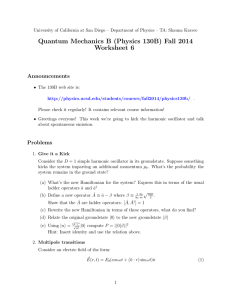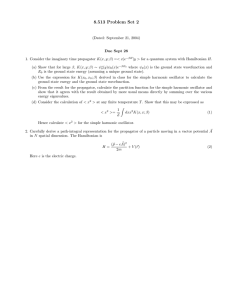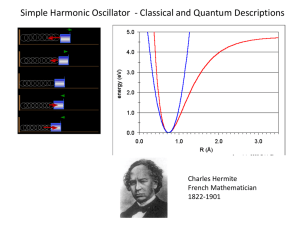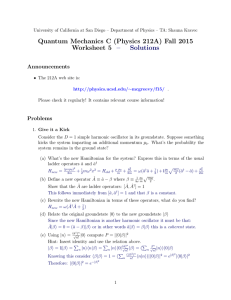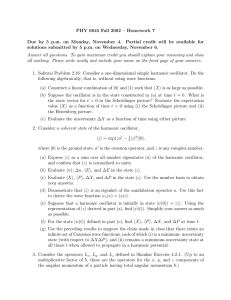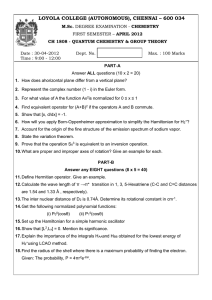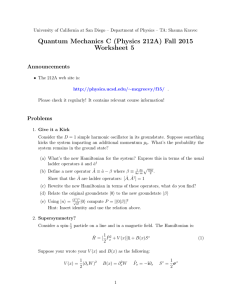Quantum Mechanics B (Physics 130B) Fall 2014 Worksheet 6 – Solutions
advertisement
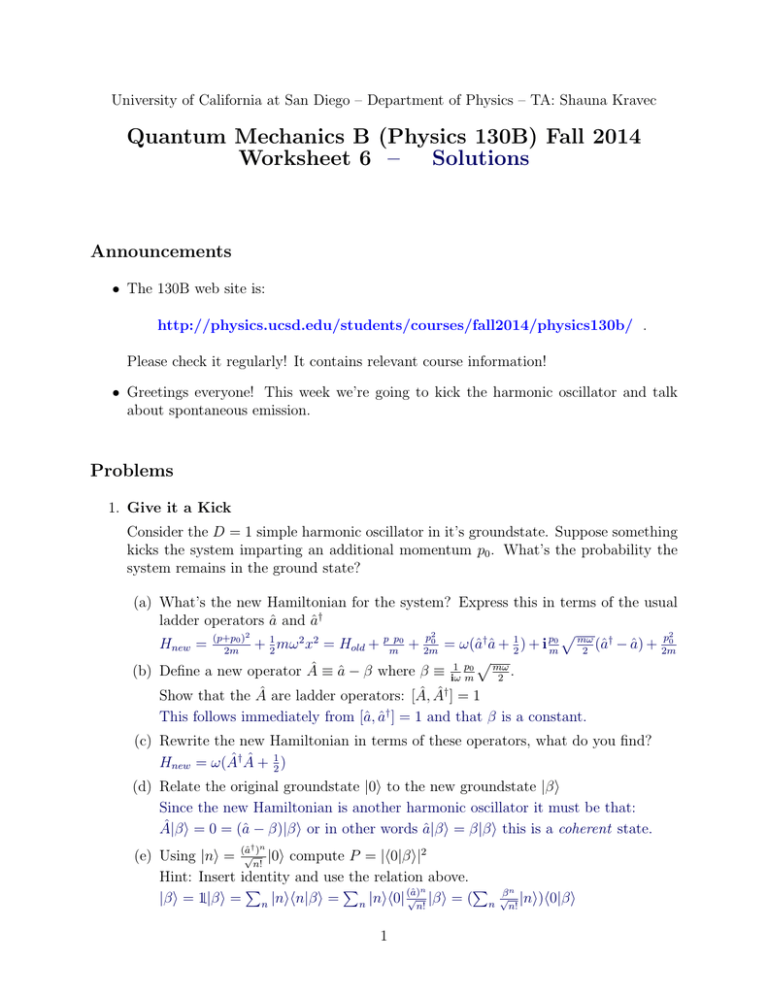
University of California at San Diego – Department of Physics – TA: Shauna Kravec Quantum Mechanics B (Physics 130B) Fall 2014 Worksheet 6 – Solutions Announcements • The 130B web site is: http://physics.ucsd.edu/students/courses/fall2014/physics130b/ . Please check it regularly! It contains relevant course information! • Greetings everyone! This week we’re going to kick the harmonic oscillator and talk about spontaneous emission. Problems 1. Give it a Kick Consider the D = 1 simple harmonic oscillator in it’s groundstate. Suppose something kicks the system imparting an additional momentum p0 . What’s the probability the system remains in the ground state? (a) What’s the new Hamiltonian for the system? Express this in terms of the usual ladder operators â and ↠p mω † 2 p20 p2 p p0 p0 1 1 0) 2 2 † + mω x = H + + = ω(â â + ) + i (â − â) + 2m0 Hnew = (p+p old 2m 2 m 2m 2 m 2 p (b) Define a new operator  ≡ â − β where β ≡ iω1 pm0 mω . 2 Show that the  are ladder operators: [Â, † ] = 1 This follows immediately from [â, ↠] = 1 and that β is a constant. (c) Rewrite the new Hamiltonian in terms of these operators, what do you find? Hnew = ω(†  + 12 ) (d) Relate the original groundstate |0i to the new groundstate |βi Since the new Hamiltonian is another harmonic oscillator it must be that: Â|βi = 0 = (â − β)|βi or in other words â|βi = β|βi this is a coherent state. † n (e) Using |ni = (â√n!) |0i compute P = |h0|βi|2 Hint: Insert identity and use the relation above. P P P n √ |βi = ( |βi = 1|βi = n |nihn|βi = n |nih0| (â) n n! 1 βn √ |ni)h0|βi n! Knowing this consider hβ|βi = 1 = ( Therefore: |h0|βi|2 = e−|β| P n (|β|2 )n hn|ni)|h0|βi|2 n! 2 = e|β| |h0|βi|2 2 2. Multipole transitions Consider an electric field of the form: ~ t) = E0 (cos ωt + (k · r) sin ωt)n̂ E(r, (1) which is coupling to a particle of charge q. Recall from lecture that the interaction Hamiltonian is: H 0 = −qE(r, t)n̂ · r and that the spatially independent term produces a spontaneous decay rate of: Rf →i = ω 3 q 2 |hf |(n̂ · r)|ii π0 ~c3 (2) (a) Write the expression analogous to 2 for the spatially varying piece Everything is the same except the matrix element gives you Rf →i = If you then pull out |k| = ω c you then find R ∝ ω 3 q 2 |hf |(n̂·r)(k·r)|ii|2 π0 ~c ω5 c5 (b) Consider this problem where the particle is in a D = 1 oscillator potential with frequency Ω. Calculate the transition rate from n to n − 2 ; don’t calculate the averaging over n̂ or k̂ Choose the oscillator in the x̂-direction so that n̂ · r = x n̂x and k̂ · r = x k̂x One finds R ∝ |hn − 2|x2 |ni|2 which x2 ∝ (a2 + aa† + a† a + (a† )2 ) and only the â2 term contributes 2
